Student Research
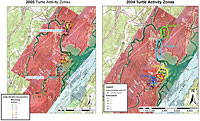
Lucy Van Hook, 2005-06.
Snapping turtle population ecology and status in Merrymeeting Bay and its
tributaries.
Biology honors thesis. Doherty Coastal Studies Summer Research Fellowship. Barry M. Goldwater Scholarship.
Methods:
Study Area: Snapping Turtles, Chelydra serpentina, were captured, marked and released in the Cathance and Muddy Rivers, two smaller tidal rivers that are part of Merrymeeting Bay. Turtles equipped with radio-transmitters were tracked throughout the Cathance and Muddy Rivers.
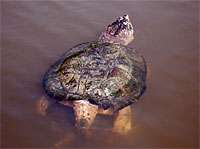
In the Field:
Measuring Turtles:
The majority of our marked Snapping Turtles were captured immediately after nesting.
Females that were no longer nesting, were weighed in kilograms, measured in centimeters using tree
calipers, and marked using a file.
On all captured turtles, male and female, measurements of the maximum length and width of the carapace, the length of the plastron, the plastron posterior lobe, and the distance from the base of the posterior lobe to the vent were taken.
Turtles were marked with a file, with the marginal scutes labeled 1-5 on the right and 10-50 on the left.

Trapping Turtles:
Hoop traps were equipped with floatation devices to ensure air pockets as the tide fluctuated. Both ends were anchored to keep the trap open.
Hoop traps were baited with sardines and set in smaller tidal creeks off of the Cathance and the Muddy Rivers.
Traps were set for several days, but were checked every 24-25 hours.
The same measurements were taken on trapped turtles.
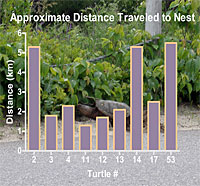
Tracking Turtles:
Radio transmitters were placed on the lower right section of the carapace of six female turtles. All of the female turtles were captured at the Muddy River Bridge during nesting season.
Radio transmitters were adhered to the carapace with marine epoxy.
Once the turtles were released, the transmitted radio signals are picked up by the yagi antenna. Using the antenna allows the field researcher to locate the turtle.
Once the turtle was found data were collected. The data were positional location, air, water and mud temperature, density and type of vegetation, tidal stage, exposure of carapace and any other observations.
The turtles were tracked 2-4 times weekly during June and July, and at least once a week during August.
Twenty-four hour tracking sessions occurred on July 12, and August 23, 2005.
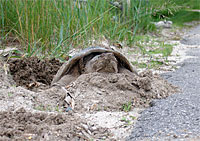
Data Logger:
Continuous air, water and mud temperatures of the mudflat and nearby water channel were obtained via probes that transferred the data to a HOBO Micro Station data logger.
Light levels were measured with a Photosynthetically Active Radiation (PAR) smart sensor, which also downloaded data to the HOBO Micro Station data logger.
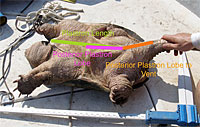
In the Lab:
Data Analysis:
Tracking, trapping and nesting data were entered into excel worksheets.
Positional data were transferred to ESRI ARCmap files and displayed visually.
Movement patterns were analyzed on the maps.
Further analysis will occur with the temperature data logger data.
Acknowledgements:
I would like to thank Jaret Reblin, for directing the research and data collection, John Lichter for advising, Mark Burton, Mary Kate Wheeler and Heather Caron for data collection, Susanne Kynast for literature sources and aging techniques and Anne Henshaw for being the summer fellowship director. My summer s research was made possible by funding from the Doherty Fellowship.
References Cited:
Austin, Phyllis. IF&W Outlaws Commercial Harvest of Snapping Turtles . Maine Environmental News. July 26, 2002.
Brooks, Ronald J. Dynamics of a Northern Population of Snapping Turtles. How Can a Long Lived Species be Conserved? . Status and Conservation of Turtles of the Northeastern United States. Robert Tyning, ed. Massachusetts Audubon Society. 1997.
McCollough, Mark. Status and Conservation of Turtles in Maine . Status and Conservation of Turtles of the Northeastern United States. Robert Tyning, ed. Massachusetts Audubon Society. 1997.



